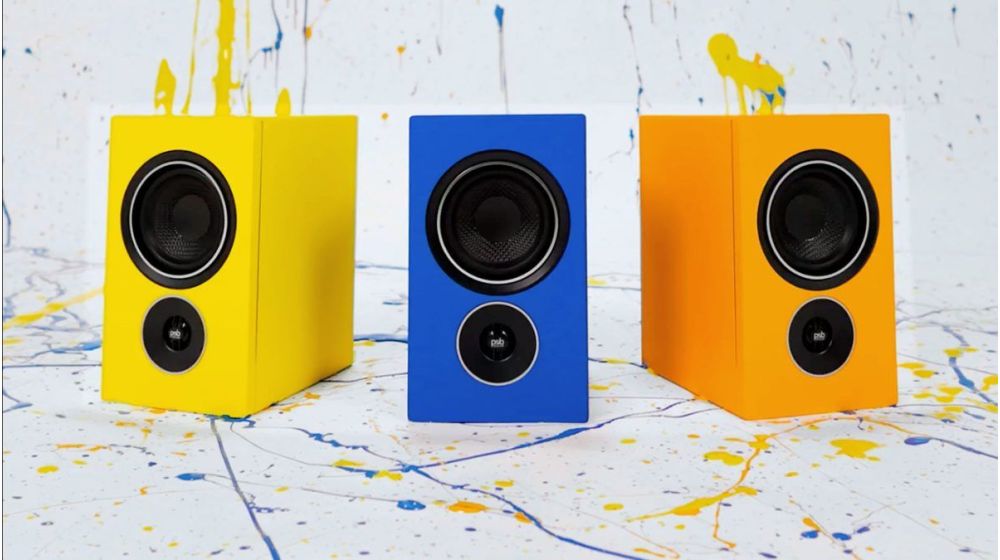TechRadar Verdict
PSB’s handsome Alpha iQs deliver highly accurate sound – no surprise from this well-established Canadian maker – and a wide range of streaming features. The competition among active streaming speakers in this range is stiff, and the PSB’s excellent sonics are offset by the absence of any room EQ features and no dedicated remote control, but for anyone looking for a music-first soundbar alternative, the Alpha iQs present a top-tier option.
Pros
- +
Compact, all-in-one design
- +
HDMI eARC and phono inputs
- +
Subwoofer output offers valuable system-upgrade
Cons
- -
Requires app for setup and everyday use
- -
No EQ for near-wall or desktop placement
- -
Not quite enough output for larger rooms
Why you can trust TechRadar
PSB Alpha iQ: One-minute review
The Alpha iQ from Canada’s PSB Speakers is the company’s first active-streaming model: a very compact bookshelf design that nevertheless produces superb sound with surprising dynamic and bass abilities. Like other examples of the best wireless speakers, On-board Wi-Fi, USB, and aptx HD Bluetooth give users plenty of streaming options, and it uses the BluOS ecosystem for multiroom playback and control.
The BluOS Controller iOS/Android app (MacOS and Windows versions are also available) used by the Alpha iQ is highly capable but occasionally quirky to navigate, though AirPlay and Roon (the Alpha iQ is “Roon Ready”) provide further streaming options. The iQ also has a turntable-ready phono input and an HDMI eARC port for the best TVs, so connection flexibility here is excellent.
Listeners who value accurate, true-to-life musical sound will be well pleased, though those seeking maximum head-bang-per-buck may be disappointed. Nonetheless, the Alpha iQs are more than ready to fill any up to solidly medium-sized room with convincing levels of lifelike musical sound.
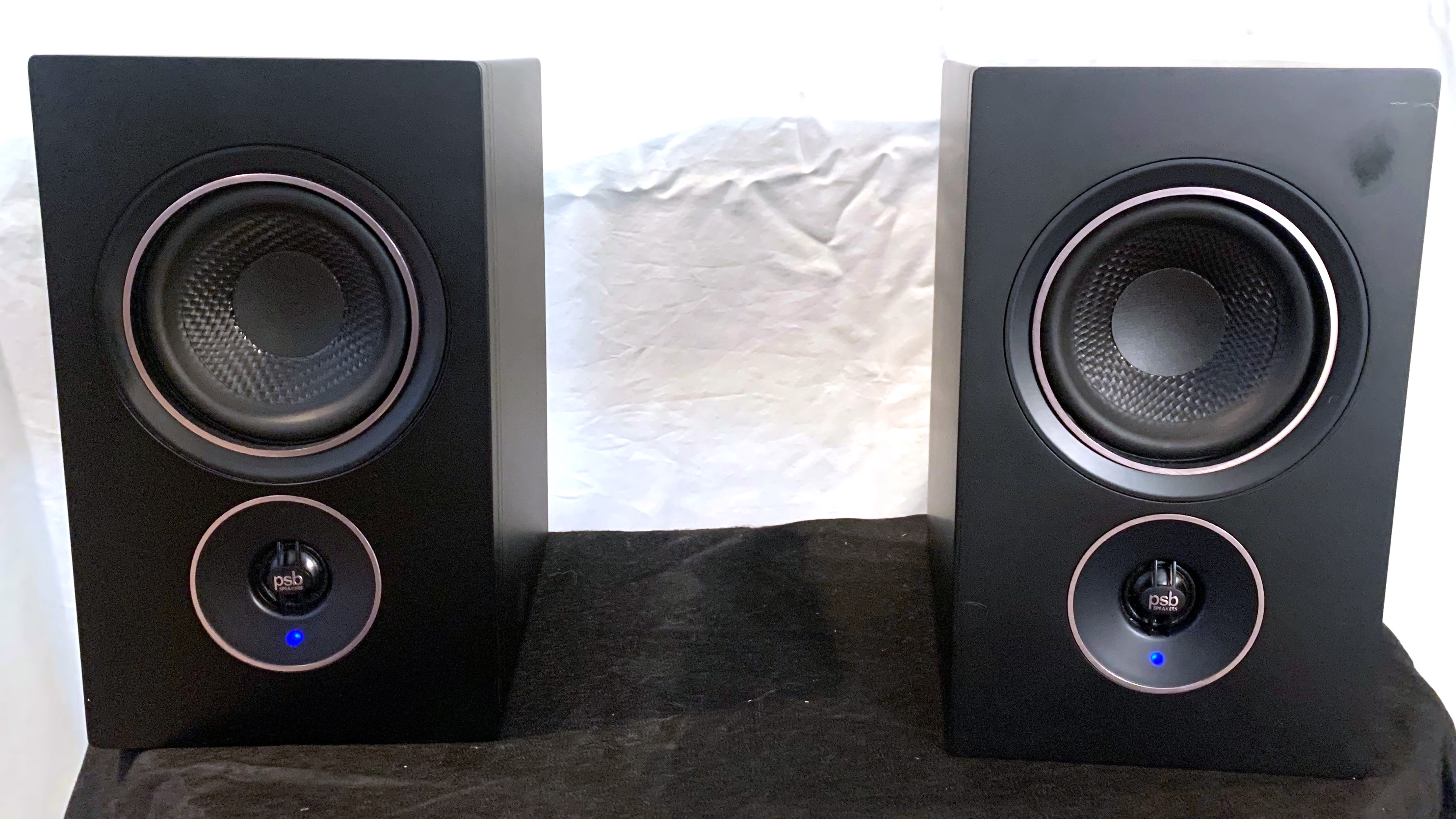
PSB Alpha iQ review: Price & release date
- Released September 2022
- Priced at $1,299 / £1,099
The PSB Alpha iQ was released in September 2022 and is available in the US, UK, Europe and directly from the PSB Speakers website. At the time this review posted, the price for the Alpha iQ had dropped to $999 in the US.
PSB Alpha iQ review: Specs
| Speaker drivers | 0,75-inch tweeter, 4-inch woofer |
| Amplification | 30 watts (tweeter), 60 watts (woofer) |
| Dimensions | 5.6 x 9.6 x 7.5 in (145 x 246 x 192mm) |
| Connectivity | Wi-Fi, aptX HD Bluetooth , USB type-A, Ethernet, optical digital audio, MM phono, 3.5mm analog |
| Streaming support | BluOS, Apple AirPlay 2, Roon Ready |
| Voice assistant support | Alexa, Google Assistant, Siri |
| Other features | Multiple color options |

PSB Alpha iQ review: Features
- Powered speaker pair
- HDMI eARC and phono inputs
- BluOS app used for setup and control
The Alpha iQ’s two speakers are not identical, though each builds in a pair of amplifiers, of 30 and 60 watts respectively, for the tweeter and woofer. But the “secondary” speaker has no rear-panel features at all beyond an IEC power-cord socket and a pinhole reset-button access. All connections are on the main speaker, which can be assigned left or right status at setup, while the secondary speaker receives a digital signal wirelessly from its mate. (I could not find official word on the Alpha iQ’s internal or inter-speaker resolution, but believe it to be 24-bit/192 kHz.) The crossovers, driver EQ, and smart limiting are DSP-based.
Inputs on the main speaker include HDMI eARC, phono (moving-magnet cartridges only), an optical digital audio port, and a 3.5-inch stereo minijack input. Other connections include a subwoofer output, Ethernet network port, a USB port, and an AC power input.
A small play/pause/skip touch-panel is handsomely set into the main speaker’s top panel. No remote control is provided, as it is presumed that the BluOS app will serve as the primary user interface. This puts the BluOS app, which bakes in access to every major streaming service (and quite a few more) and is also required for installation and setup, front and center.
The new BluOS 4.0 app that’s used for streaming and control of the Alpha iQs proved a very worthwhile update – really, an overall re-design. Where I found the previous BluOS version to be occasionally confusing, and needlessly (I thought) complicated, 4.0 proved simpler, smoother, and altogether more logically laid out and organized.
That said, this is a review of the Alpha iQ speakers not of the BluOS app, so I’ll be brief. The new BluOS app’s Home Screen shows your most-used sources or services, recent stations, and a quintet of icons across the bottom to select Favorites, Music (streaming services, inputs, or network “shares”), Players (you might have multiple BluSound speakers or components in different rooms), and a Search panel.
Navigation is fairly straightforward – much more so, in my view, than the earlier versions of the app. A “now playing” bar across the bottom, which shows the current player, track and scrolling title data, a mini album-art panel, and play/pause and volume buttons. This last is a two-step process; you must first touch the Volume icon, which switches to a volume slider that you can then adjust.
- Features score: 5/5
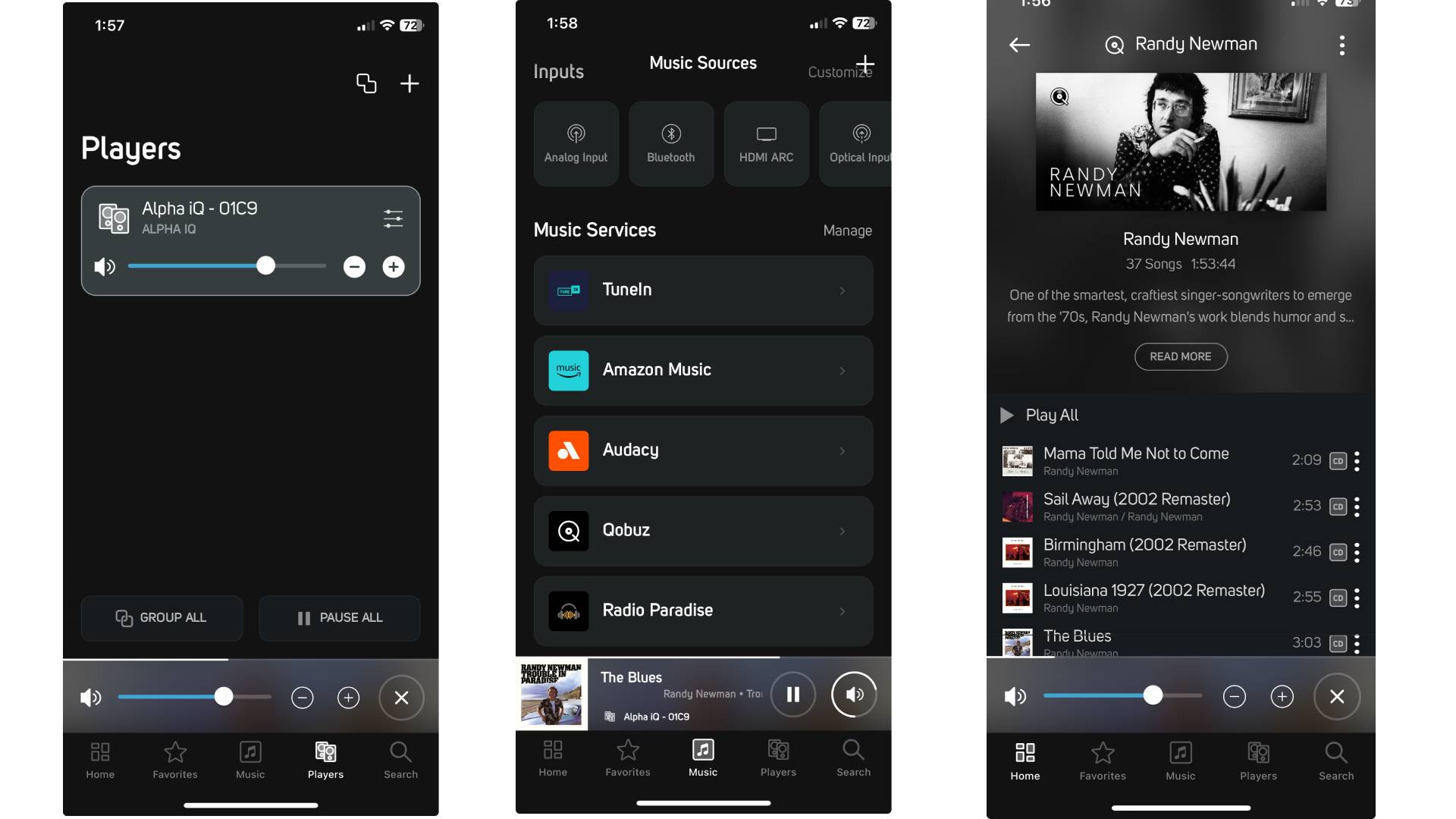
PSB Alpha iQ review: Sound quality
- Natural sound balance
- Stable and precise stereo imaging
- Finite level and bass extension
The PSB Alpha iQs scored highly when it came to sound quality. Both male and female vocals were consistently natural and projected well out into the listening space. The little Alphas also went to about 45 Hz or so with honest tonality and definition. For example, on a track like Bonnie Bramlett’s rendition of the standard “Cry Me a River,” the low “F” in the bass guitar (about 44 Hz) was solid, but the low “C” below it was audibly a bit lighter when compared directly to a much larger, fuller-range speaker.
Classical chamber music and small-combo jazz were unmitigated delights, and even orchestral recordings (Stravinsky) and reference-grade rock (Steely Dan) sounded suitably big, balanced, and impressively detailed and defined, with tight, stable stereo imaging, and plenty of output. Volume, however, was finite: when asked for more, the Alpha iQs simply failed to increase loudness, while their onboard “smart” limiting and equalization forestalled any audible distortion.
Connecting a powered subwoofer to the Alpha iQ's sub output automatically applies a high-pass filter at 80 Hz, which achieves two advantages. First, it extends system response downwards to the capability of the sub; second, it removes the burden of reproducing deep bass from the little Alpha iQs, yielding a significant gain in overall clean level.
With my everyday subwoofer connected, the Alpha iQs became the crux of a full-range, full-level system, one that proved entirely capable of delivering a big, demanding recording like Charles Ives’ “A Concord Symphony” (the “Concord” piano sonata brilliantly orchestrated by the late Henry Brant) with visceral impact, breadth, and deep, reverberant, symphonic-bass-drum thwacks.
Imaging was fairly “tight.” By that I mean it didn’t expand much beyond the speakers or deliver an exaggerated illusion of front-to-back depth, but it was very precise in locating instruments and voices on the soundstage, and in projecting centered voices or soloists well out into the room.
Partly inspired by this trait, I tried the Alpha iQs for a bit as desktop speakers. Despite the fact that they’re a little big for such deployment, they sounded terrific up close this way, with generally fine accuracy and a more dramatic, close-in stereo effect. But the PSBs suffered a bit from a more blousy mid-bass and slightly congested vocal range, likely due to sonic reflections from the desk and computer monitor screen surfaces. The lack of any DSP equalization for such placement, as many similar designs incorporate, was a missed opportunity here.
I briefly used the HDMI eARC input to confirm operation with my Sony OLED TV, which worked as expected. I also spun a few LPs from my classic Rega Planar turntable with its equally classic Shure V-15III moving magnet cartridge doing the honors, and this sounded as excellent as I expected. And as already mentioned, connecting my compact sub to the Alpha iQ’s subwoofer output transformed the little PSBs into a full-blown, full-range, high-end experience.
- Sound quality score: 5/5
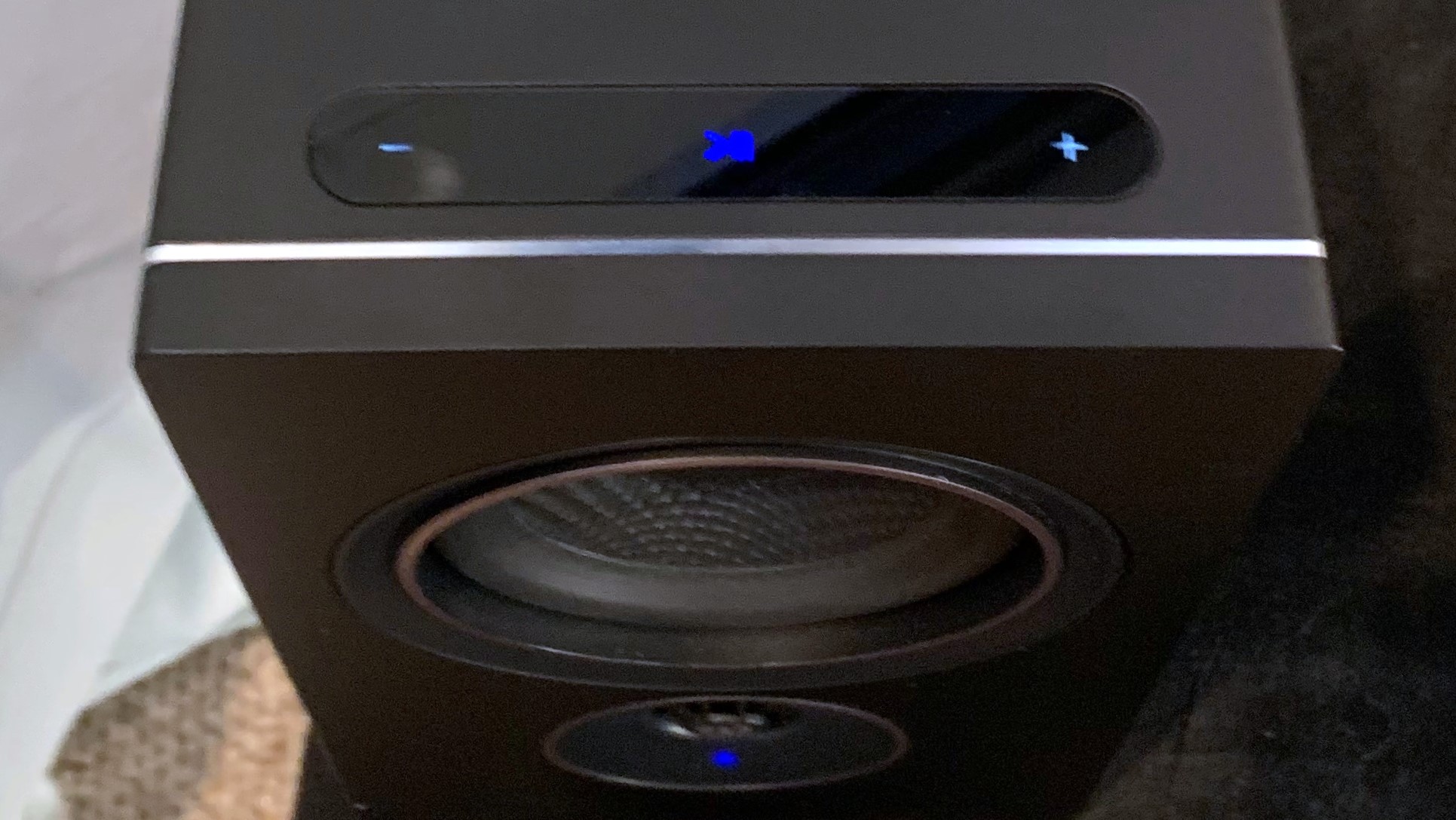
PSB Alpha iQ review: Design
- Compact bookshelf design
- Blue, orange, yellow, black or white matte lacquer finishes
- 2-way “tweeter under” configuration
The PSB Alpha iQ speakers are compact-bookshelf size and borderline small enough for desktop use. They are available in blue, orange, yellow, black or white matte lacquer finishes. My black pair showed first-rate fit and finish and attention to detail.
The Alpha iQs have an unusual, “tweeter-under” design, meant to be located “upside-down” with the 4-inch woofer above the 0,75-inch tweeter to direct the “in-phase lobe” (i.e. the best-balanced sound) to the listener’s ears. With a multi-color LED integrated into the tweeter, and slim bright-work accent rings around each driver, it’s a very handsome rig. The cabinets are vented by rear-panel ports (the rear panel and front baffle are aluminum, while speaker’s top, bottom, and sides are the usual MDF wood-composite).
- Design score: 4/5
PSB Alpha iQ review: Value
- Pricier than similar options
- Can accommodate both analog and streamed sources
- Added value if already in BluOS ecosystem
The PSB Alpha iQs are relatively pricey compared to similar options such as the SVS Prime Wireless Pro ($899.99) and Elac Debut ConneX ($399.98). Both the PSB and SVS feature an array of digital and analog inputs for connecting external sources, including HDMI ARC for a TV connection, and the SVS also features DTS Play-Fi for high-res multiroom streaming.
Where the PSB shows its value is in its excellent BluOS streaming and control app, wide-ranging connectivity, and great overall sound quality. The compact wireless streaming speakers category is a competitive one, however, with basic streaming-only options from brands like Sonos and Apple eating up much of the pie, so the ultimate value of the Alpha iQs will primarily lie in how sold you are on the BluOS app and ecosystem.
- Value score: 3.5/5
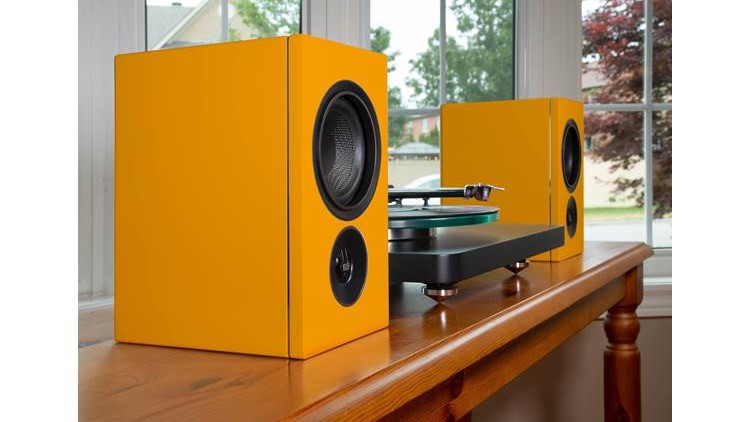
Should you buy the PSB Alpha iQ?
| Features | Phono, HDMI eARC inputs, subwoofer-output | 5/5 |
| Sound quality | Superbly accurate with reasonably extended bass for size | 5/5 |
| Design | Understatedly handsome and carefully finished | 4/5 |
| Value | Somewhat high cost balanced by terrific sound quality earns spot in a competitive field | 3.5/5 |
Buy it if…
You want a compact all-one hi-fi system
If you seek truly excellent musical accuracy, in small or medium-size rooms, from a fairly simple, compact, nice-looking pair of “all-in-one” streaming speakers.
You want a music-friendly soundbar alternative
When connected to a TV via HDMI eARC, the excellent, dynamic TV audio that dramatically upgrades in-set sound, with fine music-playback as a bonus.
Don't buy it if…
You don’t want to rely on an app
The Alpha iQs rely on the BluOS app for control and music selection, so look elsewhere if you are not prepared to use a smartphone or tablet as your main remote control.
You need to fill a very large room with sound
While the Alpha iQs can play reasonably loud, you’ll need to add a separate subwoofer to get the best dynamic performance.
PSB Alpha iQ review: Also consider
| SVS Prime Wireless Pro | Elac Debut ConneX | PSB Alpha iQ | |
|---|---|---|---|
| Price | $899 | $399 | $1,299 / £1,099 |
| Speaker drivers | 1-inch tweeter, 5.25-inch midwoofer | 0.75-inch tweeter, 4-inch woofer | 0.75-inch tweeter, 4-inch woofer |
| Amplification | 4x 50-watt amps | 2x 50-watt amps | 30 watts (tweeter), 60 watts (woofer) |
| Dimensions | 11.6 x 7.1 x 8.9 in / 295 x 180 x 228mm | 5.5 x 9.4 x 8 in | 5.6 x 9.6 x 7.5 in /145 x 246 x 192mm) |
| Connectivity | Wi-Fi, Bluetooth 5.0, USB, Ethernet, HDMI eARC, RCA stereo, 3.5mm line-in, optical digital, subwoofer output | aptX Bluetooth, HDMI ARC,USB type-B, optical digital audio, line/MM phono | Wi-Fi, aptX HD Bluetooth , USB type-A, Ethernet, optical digital audio, MM phono, 3.5mm analog |
| Streaming support | DTS Play-Fi, Apple AirPlay 2, Spotify Connect, Chromecast | NA | BluOS, Apple AirPlay 2, aptX HD Bluetooth, Roon Ready |
| Voice assistant support | NA | NA | Alexa, Google Assistant, Siri |
| Other features | Multi-room control (via DTS Play-Fi), remote control, front panel OLED display | Multiple color options, remote control | Multiple color options |

SVS Prime Wireless Pro
The SVS Prime Wireless Pro ($899) is a similar wireless stereo speaker pair with HDMI eARC plus an array of digital and analog connection options. It has a larger, 5.25-inch mid-woofer than the PSB's 4-inch driver for more extended bass, and it uses the high-res audio-capable DTS Play-Fi platform and app for streaming. Our SVS Prime Wireless Pro review is forthcoming.
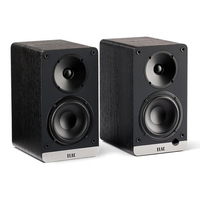
Elac Debut ConneX
Elac's compact stereo speakers are a more basic, affordable option than the PSB Alpha iQs. They feature an HDMI ARC port for a TV hookup, along with phono, optical digital and USB inputs. The main difference between the Elac and PSB speakers is that the Elac depends on aptX Bluetooth for wireless streaming, and lacks a dedicated control app. Our Elac Debut ConneX review is forthcoming.

PSB Alpha iQ review: How I tested
- Tested with music streamed via BluOS app from Qobuz, Tidal and other services
- Auditioned in same studio as several compared speakers and in “desktop audio” setup
- Tested over several weeks, listened to for more than 20 hours hours total
I had the PSB iQ pair for well over a month, and used them for casual music and TV audio for a week-plus before critical auditions. I played music via BluOS from Qobuz, Tidal, Apple Music/Classical, and my own local music file library, including both high-resolution and standard-rez/lossless sources. I also (briefly) streamed via Bluetooth from my iPhone XS and (also briefly) LPs from a decades-old but still-capable Rega Planar turntable.
I had several active and passive speakers, including my long-term Energy Veritas 2.2 monitors, SVS Prime Wireless, and KEF LS-60 in the same studio for direct comparison.
You can read TechRadar's review guarantee here.
- First reviewed: December 2023
Daniel Kumin has written about video, audio, and music technologies for more than three decades, for numerous major magazines and web destinations, and consults in the AV and other industries. He was originally trained as a composer, in case anyone wants to commission a string quartet.
